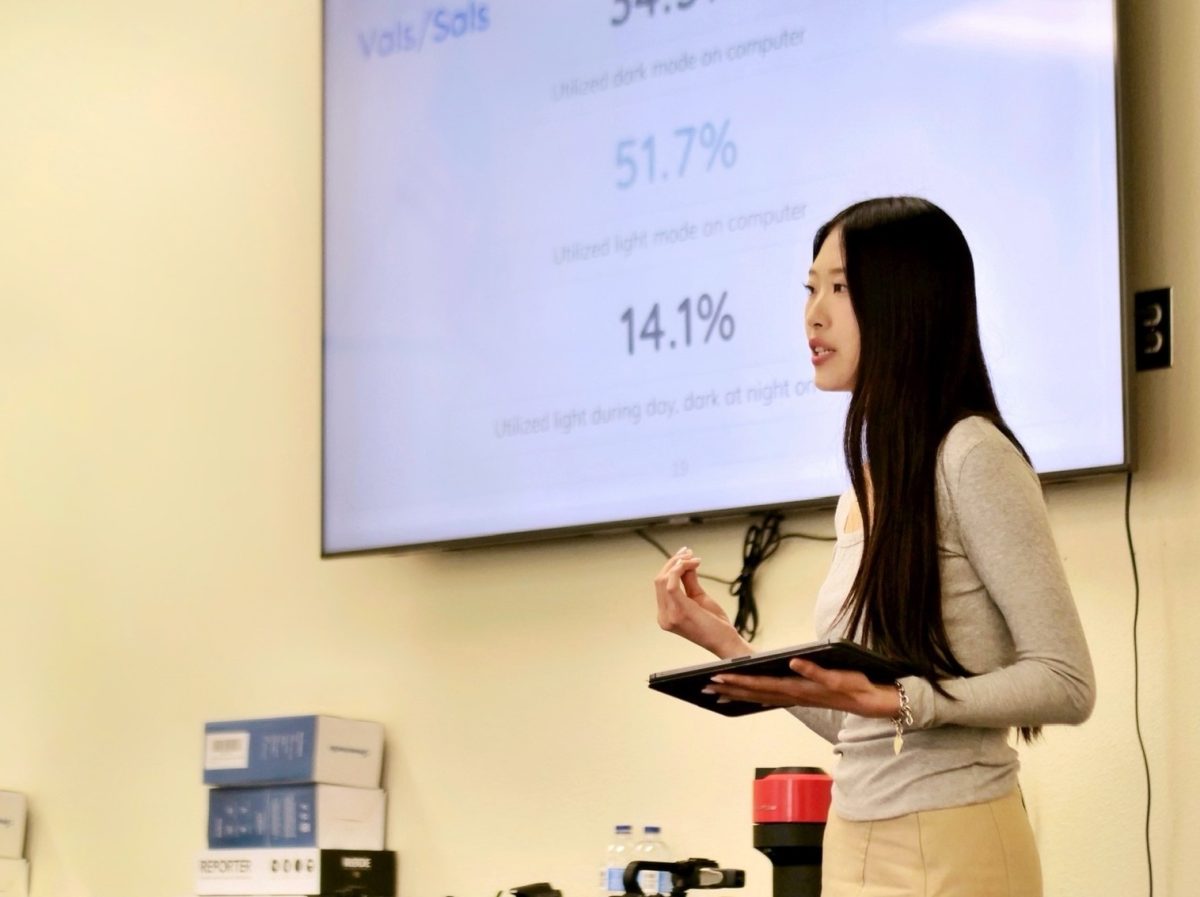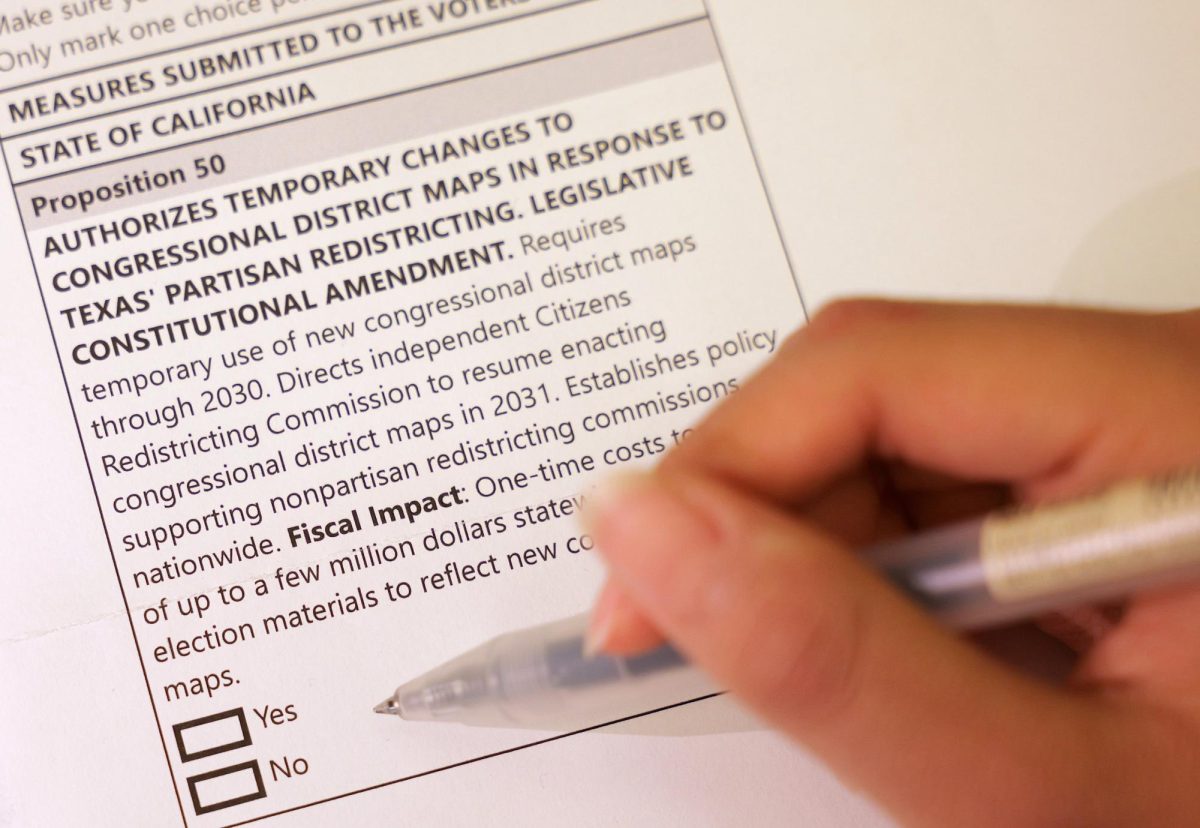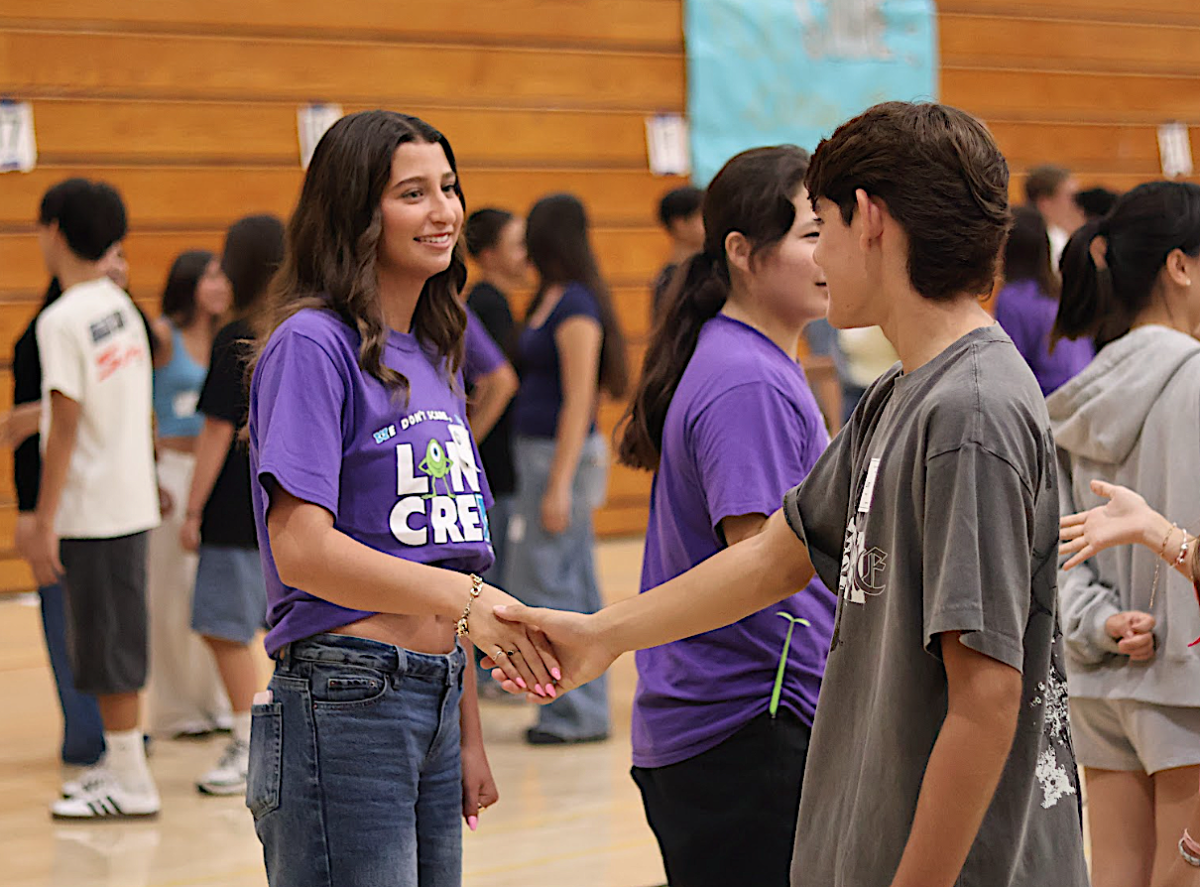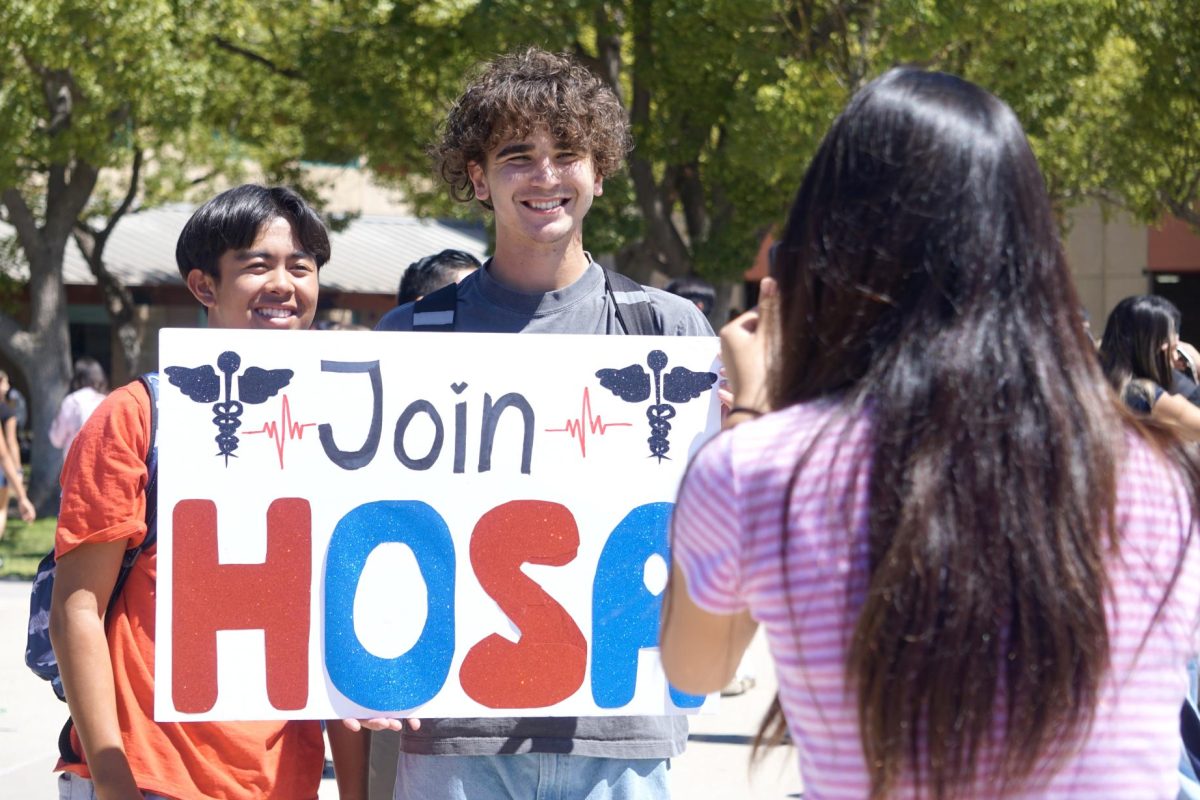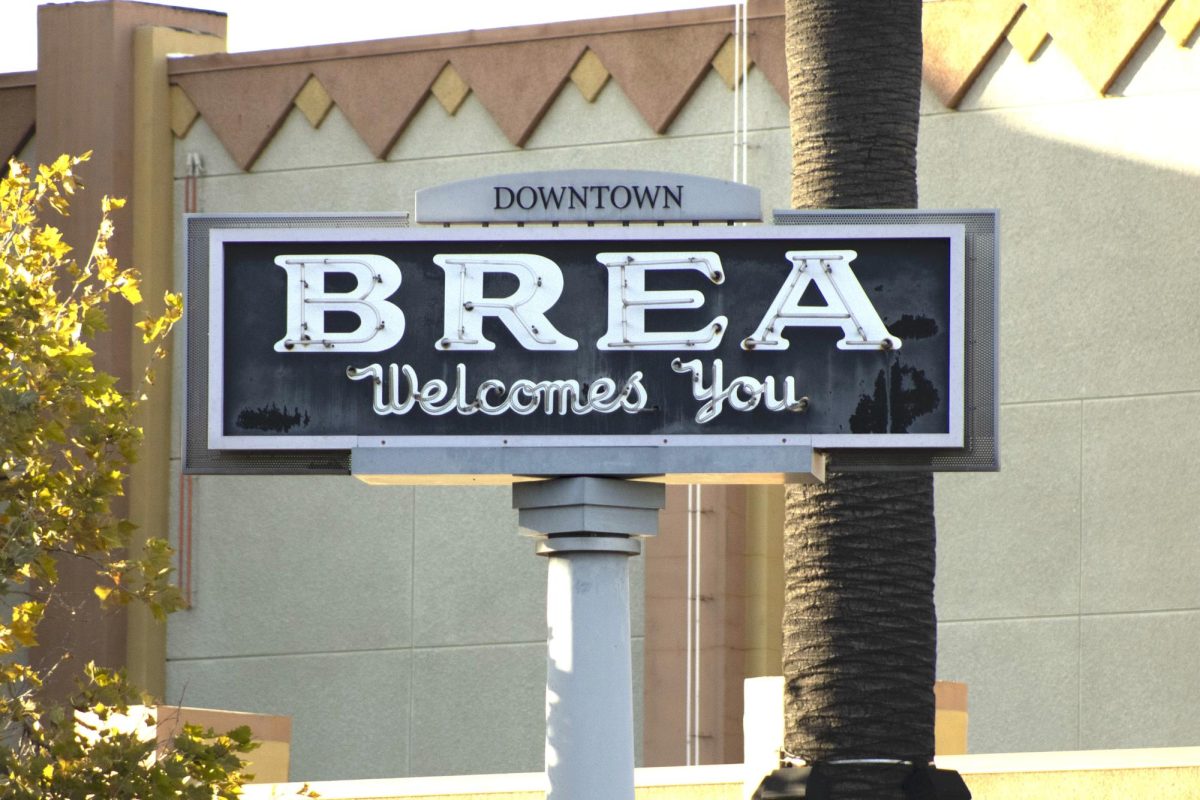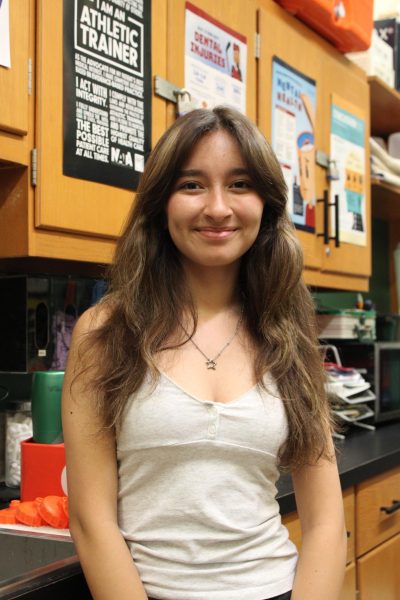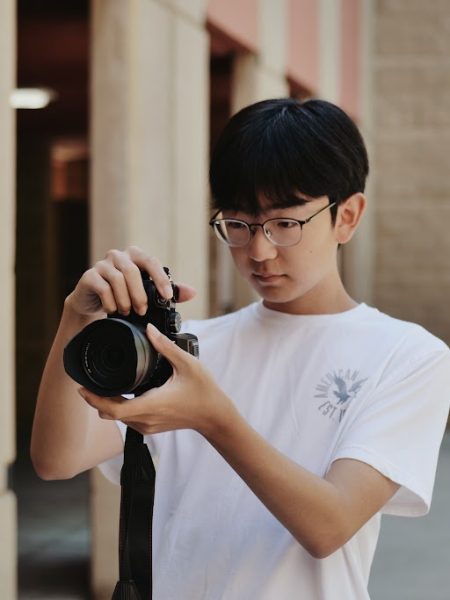For the 22 students enrolled in the inaugural Advanced Placement (AP) Research class, a two-year quest to earn an AP Capstone diploma comes to an end this month with the submission of a 4,000 to 5,000 word academic paper and a presentation in front of a panel of judges.
AP Research, a senior-year elective, fulfills the AP Capstone Program requirement for those students who participated in AP Seminar their sophomore year.
Beginning April 1 and concluding April 23, the 22 seniors presented on topics ranging from Gen Z’s use of Korean beauty products, to cultural biases in Artificial Intelligence, to the benefits of napping for improved muscle recovery and athletic performance in high school athletes, to the impact of financial literacy on digital currency use.
The presentations, conducted in Room 205, are the culmination of a year spent researching, drafting, and editing an academic paper on a student-selected topic, then conducting and presenting a statistical analysis of that research.
One of the benefits of the program, according to Verronica Clements, AP Seminar and AP Research teacher, is student autonomy. “Students don’t get enough opportunities to research things they care about,” Clements, who pioneered the AP Capstone Program at BOHS, said.
AP Research allows students to explore, over nine months, a topic entirely of their choosing.
“AP Research has a lot of freedom for students to explore unique topics and conduct different types of tests,” Kaitlyn Lee (‘25) said. Lee noticed a lack of scholarship on the effects of light and dark display modes on academic performance for teenage internet users so, utilizing a mixed-method study throughout the school year, she researched her topic. (Lee ultimately concluded that there was no significant difference between dark mode and light mode on academic performance.)
Lee, and the other students in her cohort, were required to analyze scholarly works on their topic, find a research “gap,” then carry out experimental procedures through various modes of research (like cross-sectional analysis and case studies) to “fill the gap” with their findings.
25% of each student’s AP Research exam score is determined by a presentation of their conclusions and an oral defense of their claims. Each day, two to three students presented their findings to a panel of three guest judges, including Brea Olinda Unified School District (BOUSD) faculty, Brea City Council members, and BOHS administrators.
Judges watched the 15 to 20 minute presentations; scrutinized supporting data visuals projected onto 75-inch monitors; asked questions so students could elaborate on their research process or insights; and then scored them for submission to CollegeBoard. Results will be available in July.

Kim Kessel, BOHS counselor and a judge of the April 10 presentations, found that projects like Lee’s demonstrated university-caliber skills and represented the sorts of projects that Kessel herself “had to do in college.”
AP Research is, technically, the second phase of the two-year Capstone Program. Research extends the curriculum of scholarly literature analysis — of scientific journals, research theses, and government studies — taught in AP Seminar in the tenth grade. The main difference from phase one to phase two is that there is only one year-long project in AP Research, versus the many collaborative and individual presentations and papers that comprise AP Seminar.
Jonai Keys (’25) found the independence to be a major difference between AP Research and AP Seminar, which made self-reliance necessary to execute the multi-component research report and presentation.
The opportunity to research a topic of her choosing pushed Keys to look into maternal healthcare disparities between Black and white women, which connects to her future career as a doctor of Obstetrics and Gynecology (OB-GYN). “I [saw] that the mortality rate for Black women is way higher than for white women,” Keys said. “The studies I saw didn’t talk about the experience of all races, and if [patients] felt discriminated [against] after maternal healthcare.”
Like Keys, Nathan Kim (‘25) chose to research a topic that aligned with his career interests. An aspiring financial analyst, Kim studied how mobile payment methods, such as Apple Pay and Venmo, correlate with users’ varying levels of financial literacy. While conducting a primarily qualitative survey process, Kim learned to scrutinize quantitative graphs displaying macroeconomic trends.
“As I kept researching, I came to realize that the root of the issue isn’t income level or socioeconomic status, as I originally thought,” Kim said. “Instead, it’s financial literacy that plays the most crucial role in determining how much people trust and use digital currencies.”
Joey Davis, BOHS principal and one of three April 1 judges, acknowledged that statistical analysis is “so important for students to learn,” and that “understanding charts, graphs, and data gathered from personal research is a great progression from AP Seminar.”
In addition to analyzing existing graphs, students could choose to produce their own, using data gathered from a sizeable sample of a larger population.
Abigail Shin (‘25), for example, analyzed the “model-minority” depiction of Korean Americans in media. She reached out to 100-plus teenage and adult Korean Americans, and discovered that 64% of them felt a disconnect between their lives and the expectations portrayed for their ethnic group on television.
As AP Research students finished their presentations April 23, sophomores in AP Seminar classes had just begun their group presentations April 22.
Clements, who teaches both of the AP Capstone courses, hopes that more of her AP Seminar students will enroll in AP Research for the value that independent research and research papers will provide to students’ post-high school education and careers. “AP Research and AP Seminar are such valuable experiences for students,” Clements said.
Shin, who participated in BOHS’s first AP Seminar and AP Research classes, agreed. “Being able to explore and conduct college-level research has been incredibly fulfilling and I’m eager to put these skills to use in college,” Shin said.


